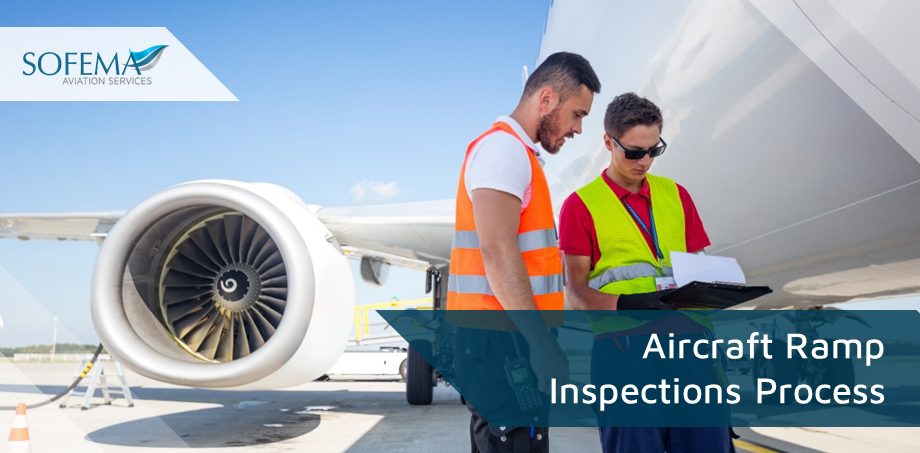Sofema Aviation Services (SAS) www.sassofia.com reviews the process by which Ramp Inspections are performed.
Introduction – See Inspection matrix
Operators licensed by EASA Participating States (PS) and inspected by other EASA Participating States are checked against EU Standards.
- These inspections are referred to as “Safety Assessment of Community Aircraft” (SACA) inspections.
All other inspections use ICAO Standards and are commonly known as “Safety Assessment of Foreign Aircraft” (SAFA) inspections.
In addition, each ICAO contracting State should perform ramp inspections on operators licensed by them; although out of the scope of the Programme, such inspections are called “Safety Assessment of National Aircraft” (SANA) inspections.
Note: A new type of inspection has been introduced for ICAO and EU inspections of General Aviation. (These are described in the Inspection Instructions and Pre‐Described findings list as SAFA‐GA and SACA‐NCC.
Performing Ramp Inspections
Ramp inspections are part of a European Union safety programme and should be performed in a harmonised and standardized way by all EASA PS and all States with which EASA signed a working arrangement (Participating States).
Note 1: State aircraft, as defined in the Chicago Convention (aircraft used in military, customs and police services and declared as such in the flight plan), are outside the scope of the EU Ramp Inspections programme.
Note 2: SANA inspections should follow, as far as possible, the same principles as applied to SAFA and SACA inspections in accordance with Part ARO.RAMP.
EASA’s role in the EU Ramp Inspections programme
- The Agency is responsible for overall coordination of the programme to all the Participating States and for reporting the results thereof to the Commission.
- The specific role and responsibilities of EASA in the EU Ramp Inspections programme are:
o To collect, using the ramp inspection tool, inspection reports of all the Participating States engaged in the EU Ramp Inspections Programme and results of alcohol tests performed on cabin crew and flight crew performed within EASA PS.
o To develop, maintain and continuously update the ramp inspection tool (e.g. explore possibilities to introduce an update of the ramp inspection tool to run on mobile devices) including tracking for ramp inspectors’ currency.
o To provide necessary changes and enhancements to the ramp inspection tool application.
o To analyse all relevant information concerning the safety of aircraft and its operators.
o To report potential aviation safety problems to the European Commission and all the Participating States.
o To inform the European Commission and all the Participating States on follow‐up actions.
o To propose coordinated actions to the Commission and the competent authorities, when necessary on safety grounds and ensure coordination at the technical level of such actions.
o To liaise with other European institutions and bodies, international organisations and third‐country competent authorities on information exchange.
o To submit a yearly report to the European Commission, Participating States and the public to reflect the activities of the EU Ramp Inspection Programme.
o To establish a list of prioritised operators, which includes:
– Third-country States (i.e. States outside the EU) deemed to have deficiencies in their safety oversight capability (Note: All operators based in these states are subject to additional scrutiny.)
– Third-country and European Union operators that should be prioritised for regular inspections
– Newly authorised third‐country operators
– Individual aircraft/operators suspected of engaging in illegal commercial operations; and
– A list of European Union and third‐country operators for prioritisation of alcohol testing based on a risk assessment performed by the Agency, taking into account the robustness and effectiveness of existing psychoactive substance testing programmes.
Additional Tasks – The Agency has the following tasks and obligations:
- To monitor the level of activities agreed upon for each non‐EASA PS;
- To perform standardisation visits to confirm competency and activities;
- To organise regular meetings to facilitate the exchange of information Ramp Inspection Coordination and Standardisation (RICS) Meeting in cooperation with Participating States;
- To arrange for working groups on new or emerging topics;
- To develop the EU Ramp Inspection Programme globally;
- To harmonize inspection methodology between Participating States;
- To maintain and develop a risk‐based model for a fair number of inspections and distribution;
- To calculate and distribute inspection targets to System-Wide Coordination (SWC) Participating States;
- To monitor the State’s compliance and adherence to System-Wide Coordination calculated targets and distribution for operators, and to collect and analyse traffic data with regards to SWC coordination and to provide it to the SWC Participating States.
Next Steps
Follow this link to our Library to find & Download related documents for Free.
Sofema Aviation Services (SAS) www.sassofia.com and Sofema Online (SOL) www.sofemaonline.com provide regulatory compliant as well as vocational training courses please see the website or email team@sassofia.com for additional guidance.
Tags:
Aircraft Ramp, EASA, EASA Participating States, EASA Third Country, ICAO, Ramp Inspections, Safety Assessment of Community Aircraft (SACA), Safety Assessment of Foreign Aircraft (SAFA), Safety Assessment of National Aircraft, SAS blogs




